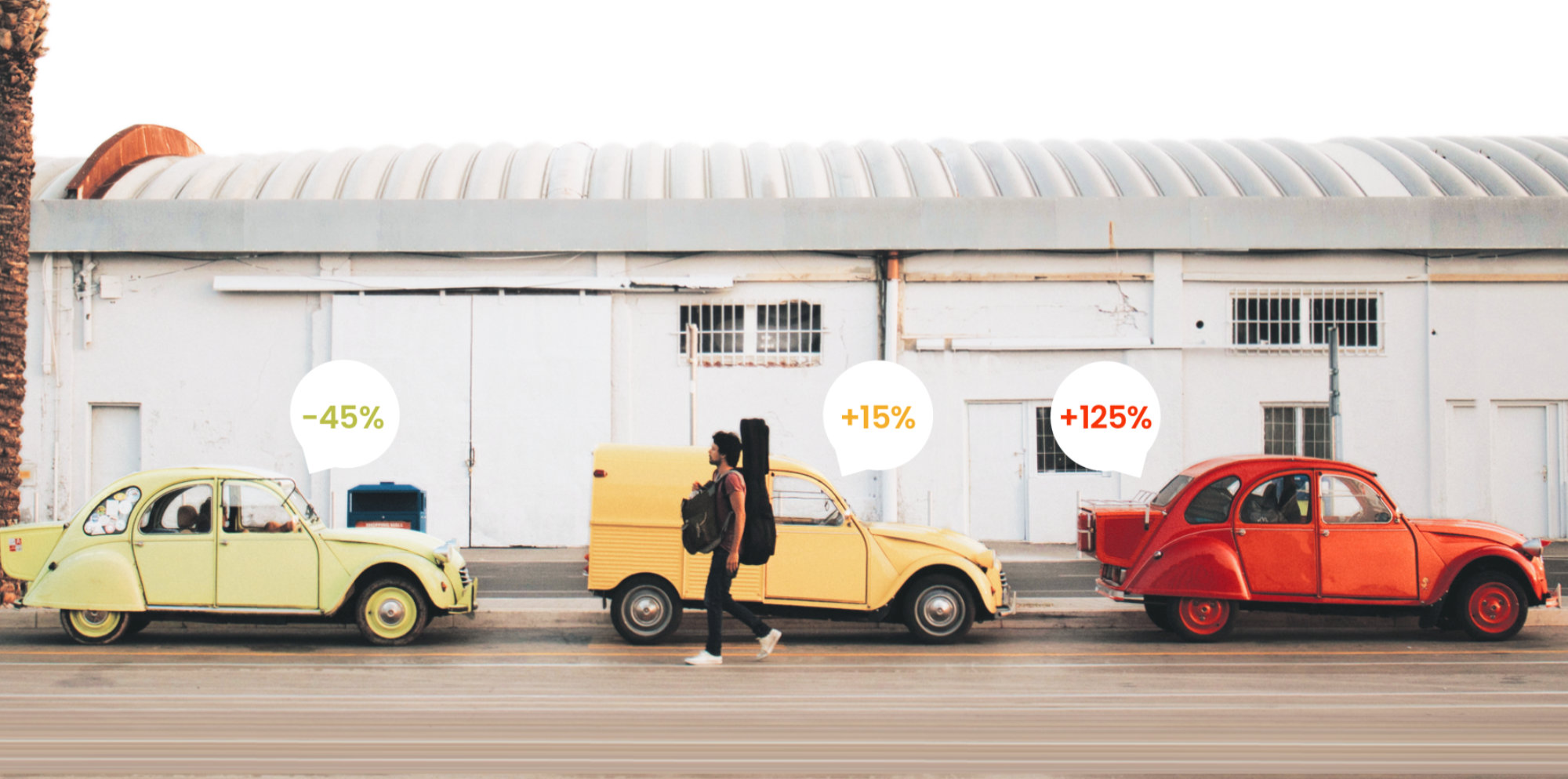When it comes to video advertising, brands have to invest much more money in their creatives than for a banner package.
As a result, unfortunately, like the TV model, production practices are limited to delivering only one video.
To generate better performance for our clients, we quickly requested, following the model of the best American cases, that the production studios deliver several ads variations of the same video, in particular for the introduction, the call-to-action, the duration, the sequencing, the soundtrack, the inlays, the catchphrases, the tone, etc…
It may seem to be a little more work for the studios but if these variations variants are anticipated from the writing phase ➔ their production is marginal ➔ the campaigns are more effective ➔ and the clients are more satisfied.
To illustrate and measure the immediate impact of these pre-campaign video Split-Tests, we calculate of a Worst-to-Best ratio.
Based on a given KPI (often conversions… but it can also be post-click visits, add to basket, clicks, views… ), we measure the performance gap between the worst and the best video variant.
After more than a dozen campaigns carried out under these conditions, we have observed discrepancies ranging from 70% to more than 600%!
This means that by launching a campaign with a single (blind) video, a brand would have seen its performance significantly impacted: the worst video could have generated a ROAS (Return On Ad Spend) of 1, for example, and the best one of 10.


 Go back to Blog
Go back to Blog 


 Read more
Read more